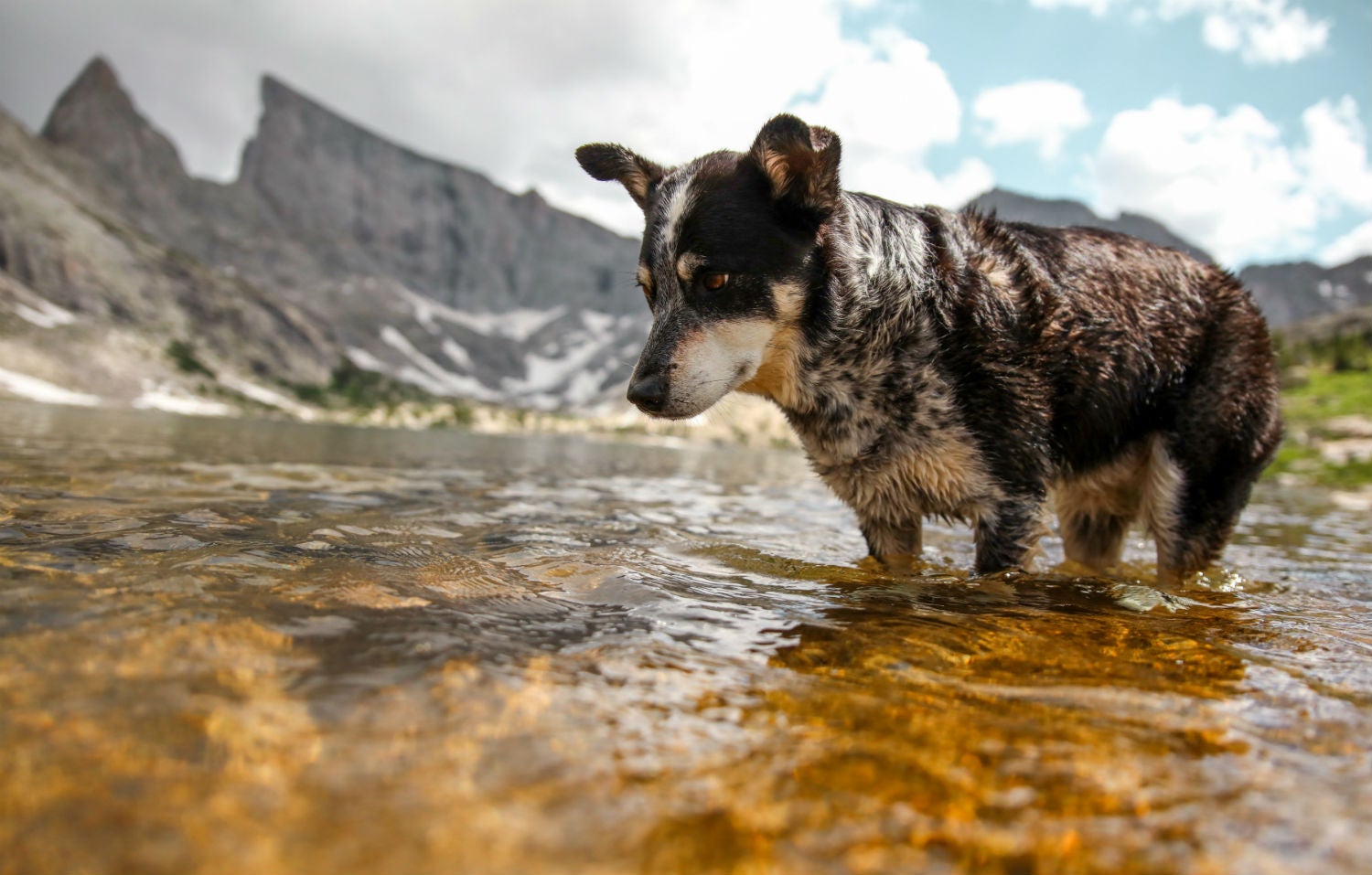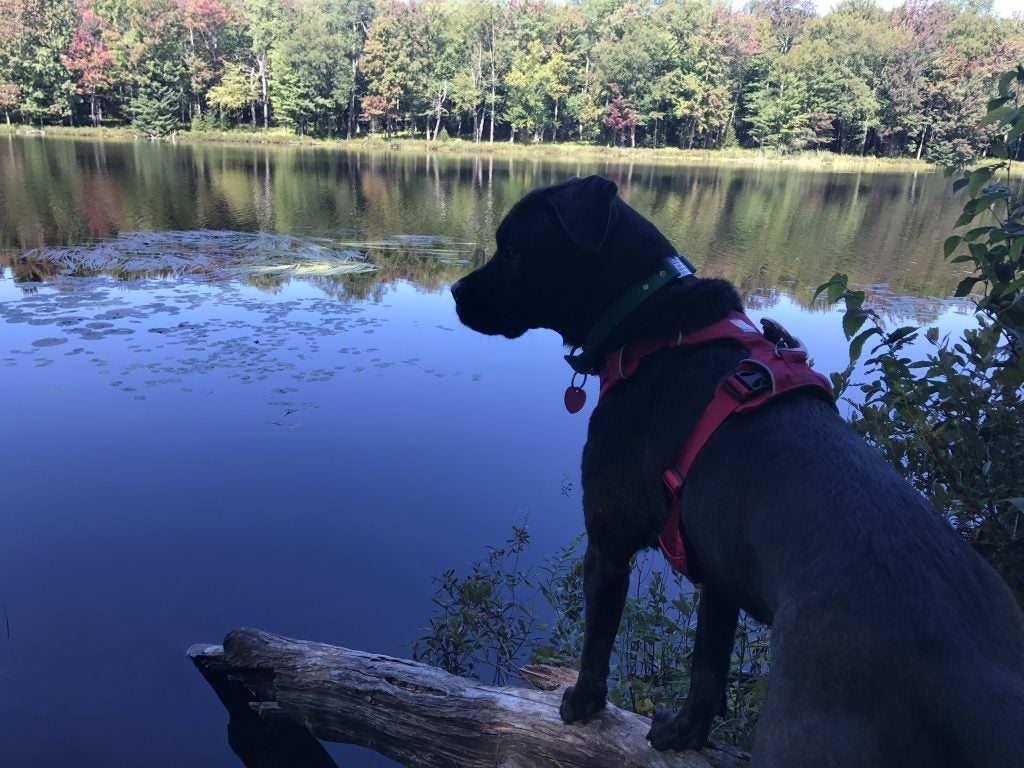We spoke to a veterinarian about trail dangers and how to avoid them.
Hiking with dogs is a favorite activity for many people and their pooches. If you’re a dog owner who brings your dog hiking, you’ve seen the joy on their face mirror the joy on your own when you reach that glittering trailhead. It really is the best.
But the wilderness can present unexpected challenges and dangers to both humans and dogs. It’s important to take those dangers seriously, so you can have some serious fun while hiking with your canine companion.
A Veterinarian’s Advice on Safely Hiking with Dogs
Here at The Dyrt, we want your dogs to be safe when hiking and camping. So we spoke to a local vet who gave us the scoop on dangers and safety when hiking with dogs. (We’ll be honest though, this article was very self-serving. We had A LOT of questions about hiking and camping with our own dogs.)
Doctor Jessica Larson from Pet Samaritan Clinic in Portland, Oregon shared her wisdom.
1. Parasites and Poisonous Substances
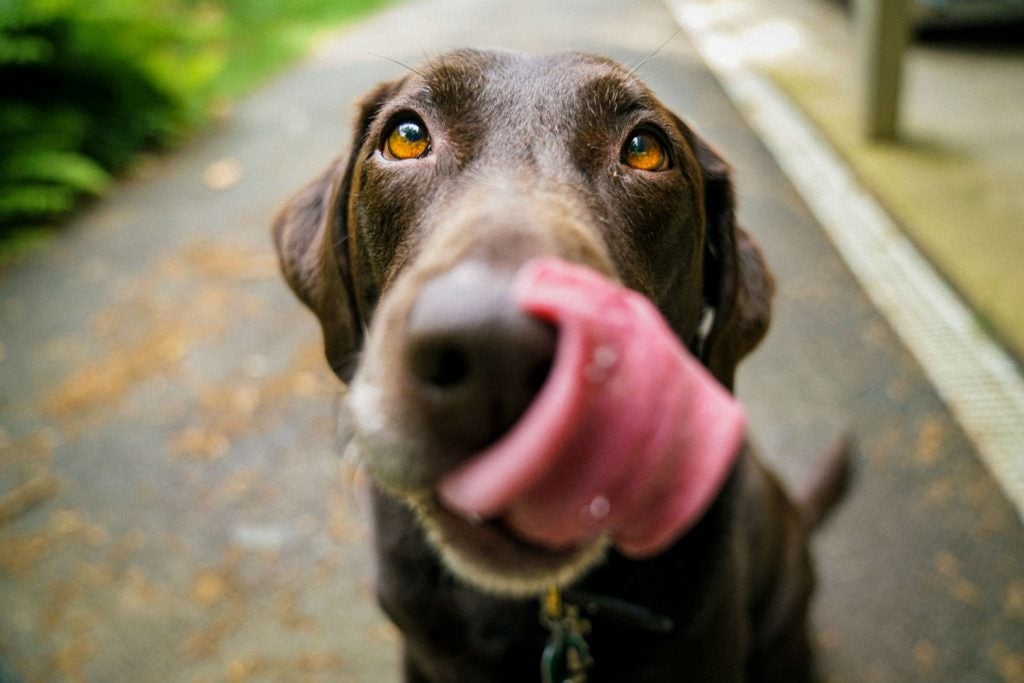
What weird thing has your dog eaten lately? We all have a list. Sometimes, it’s funny. My dog ate a pink rope toy once and pooped pink for days. Other times it’s a matter of life or death. And just because you’re out in nature doesn’t mean the things they might eat or drink are safe.
Doctor Jessica Larson: Dogs do not have instincts to know what is safe and unsafe for them to eat. Dogs will try to eat many different things that could make them sick, such as poisonous plants, sticks or rocks, and feces from other animals.
You should always try to prevent your dog from eating things they find outside.
You shouldn’t let your dog drink from streams on the trail for the same reasons you don’t drink from streams on the trail. They can contract parasitic and bacterial diseases by drinking from contaminated streams. Carry ample water and a folding water bowl for your dog and offer them water whenever you take a drink yourself (or even more frequently).
2. Falling from Steep Trail Edges
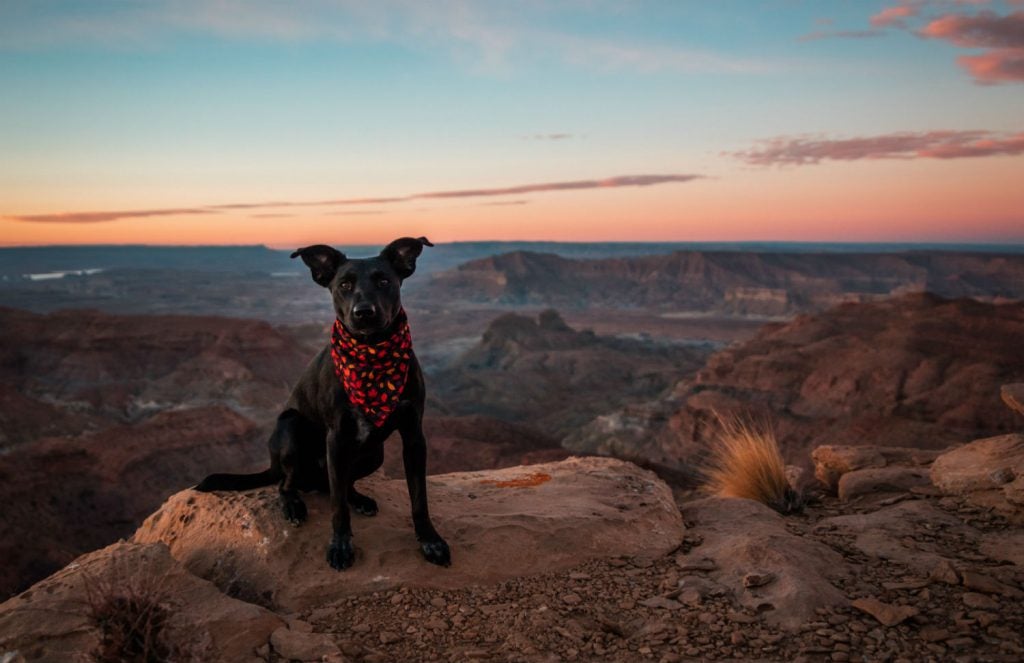
I’ll be honest: whenever possible, I love running and hiking with dogs off-leash. But I’ve seen my dog careen around a trail bend, without paying any attention to his surroundings. That’s why it’s so important to know the trail you’re going to hike before you bring your fur-pal. Dogs are not wild wood creatures who know their way around the forest, and they can easily go tumbling over the edge of a cliff they didn’t know was there.
Last summer, the Oregon Humane Society issued a warning to dog owners about keeping their dogs on their leashes in the Columbia River Gorge, where many dog owners go hiking. The warning was issued in May, and three dogs had been killed by falls from trails that year.
Off-leash is never completely safe. Dogs don’t understand when areas or animals are dangerous and can easily get themselves into trouble. Make sure your dog is well trained and has a reliable recall if you are going to let him off-leash. Make sure there are no steep drop-offs in the area where your dog will be off-leash, especially if they are prone to chasing animals or insects.
Related Reading:
Camping with Dogs: How to Have a Happier Camping Experience
3. Heat
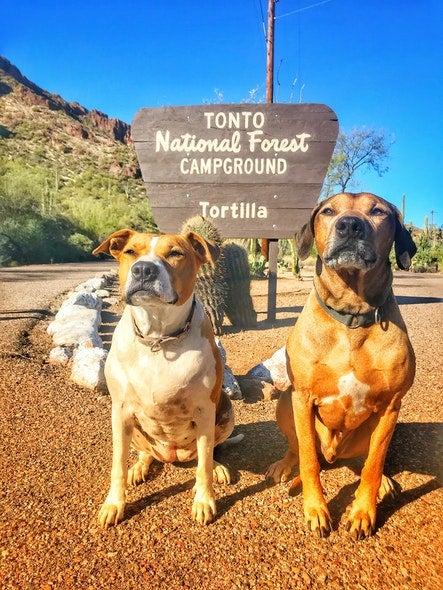
Image from The Dyrt camper Sara S.
With summer approaching, heat is often a concern. If you’re hiking with dogs on a hot day, it’s important to carry lots of water and take it easy so they don’t overheat. (You should do the same for yourself.)
Brachycephalic dog breeds are more prone to overheating. These include pugs, Boston terriers, French bulldogs, English bulldogs, Boxers and other breeds that have pushed in noses. Dogs that are overweight, dogs with heart conditions, laryngeal paralysis and dogs that are dark colors are also more susceptible to overheating.
Initial signs that your dog may be getting overheated include excessive panting, increased respiratory effort, loud breathing sounds, and foaming saliva. Other signs include very red gums, altered mentation, lethargy or lagging behind (or trying to lay down), collapse, and seizures.
If you suspect your dog is overheating, you should try to actively cool them down with cool water, shade, fans, etc. You should also seek immediate veterinary care since overheating could be life-threatening.
4. Exhaustion
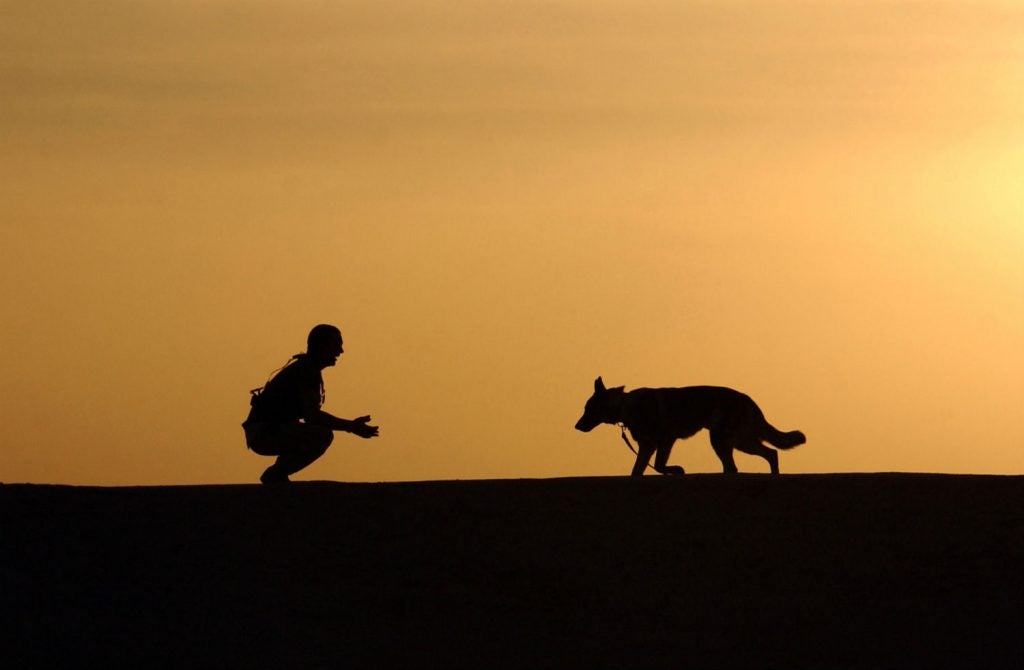
Your dog probably isn’t going to die from exhaustion, but if you’re pushing yourself to hike longer, steeper trails, keep in mind that you’re pushing your dog, too. And exhaustion on the trail can exacerbate other issues, like overheating or existing health conditions.
I’ve joked that my dog will run and run and run until he drops dead if I let him. But Dr. Larson points out one important sign that your dog is getting too tired.
If your dog is lagging behind you, you should turn around and head back. Dogs generally should be keeping up with you or be slightly ahead of you. If your dog is falling behind, they are too tired. Also watch for trying to lay down frequently, labored breathing, and foaming saliva.
5. Other animals

Before you go hiking, inform yourself on the type of wildlife you might encounter on the trail.
If you’re in bear territory, you can attach bear bells on your dog’s collar so they won’t sneak up on an unsuspecting mama bear and her cubs.
It’s important to keep your dog close, to avoid having them discover wild animals on their own.
Dogs do not know to stay away from dangerous animals and can get themselves into serious trouble. Most snake bites on dogs happen around the nose, mouth, and face because the dogs are usually trying to smell and investigate their surroundings.
Important: Have a pet emergency plan before you go hiking with dogs!
In the event that you dog is harmed by another animal, or by any of these trail dangers, it’s imperative that you know how to get them to emergency services quickly.
Don’t forget to research the veterinary emergency facilities that are closest to where you will be hiking – cellphone service can be unreliable in some hiking areas, so it’s good to have an emergency pet plan before you get there!
Hiking with your dog is a great way to bond, get some exercise, and soak up all that mother nature has to offer with your best friend by your side. Keep these risks in mind and you and your dog will have a good time! And don’t forget to outfit your dog with the proper dog hiking gear.
Bringing your dog camping after that hike? Find dog-friendly campgrounds on the Dyrt!
The Dyrt is the fastest-growing camping app on web and mobile, with new features being rolled out regularly. If you love the outdoors, discovering ideal spots to pitch your tent, and being part of a rich and active community, then join us.
The Dyrt is the only camping app with all of the public and private campgrounds, RV parks, and free camping locations in the United States. Download now for iOS and Android.
Popular Articles:
Articles on The Dyrt Magazine may contain links to affiliate websites. The Dyrt receives an affiliate commission for any purchases made by using such links at no additional cost to you the consumer.

